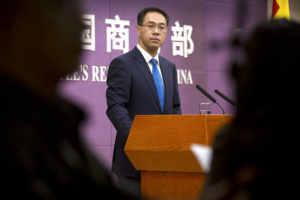TAIPEI — Taiwan saw more tourists, but less money in the hands of the industry’s professionals last year, according to new data from Tourism Bureau showing that inbound tourism revenue fell almost 8 per cent from the previous year to US$12.3 billion.
The 7.92 percent annual drop in revenue from international tourism was due mainly to a decline in the consumption power of tourists from China and Japan, the survey shows, although visitor arrivals to Taiwan totaled 10.74 million, the highest number ever recorded.
In 2017, arrivals from China and Japan were 2.7 million and 1.9 million, respectively, but the average daily spending by Chinese tourists totaled US$184.38 per person (a US$14.05 drop), while that of Japanese visitors totaled US$214.05 (a US$27.37 decrease from the previous year), according to the bureau.
It’s a worrying trend for the travel and retail industries though. Fewer visitors means fewer hotel stays, fewer meals eaten in Taiwan restaurants, fewer goods purchased in our retail stores, and fewer visits to national attractions.
Still, tourism authorities hope that the soaring number of visitors from South Korea and countries targeted under the Taiwan government’s New Southbound Policy — Southeast and South Asia nations, Australia and New Zealand — can offset the decrease in spending from Chinese and Japanese travelers.
According to the Tourism Bureau, visitors’ daily spending last year was highest among Japanese tourists, averaging US$214.05, followed by South Korea (US$194.58), China (US$184.38), Hong Kong/Macau (US$183.92) and the United States (US$155.67).
The survey also found that Kenting National Park in southern Taiwan, Sun Moon Lake in the central area, and Taroko Gorge in the east were the country’s three most popular tourist destinations, in that order.


